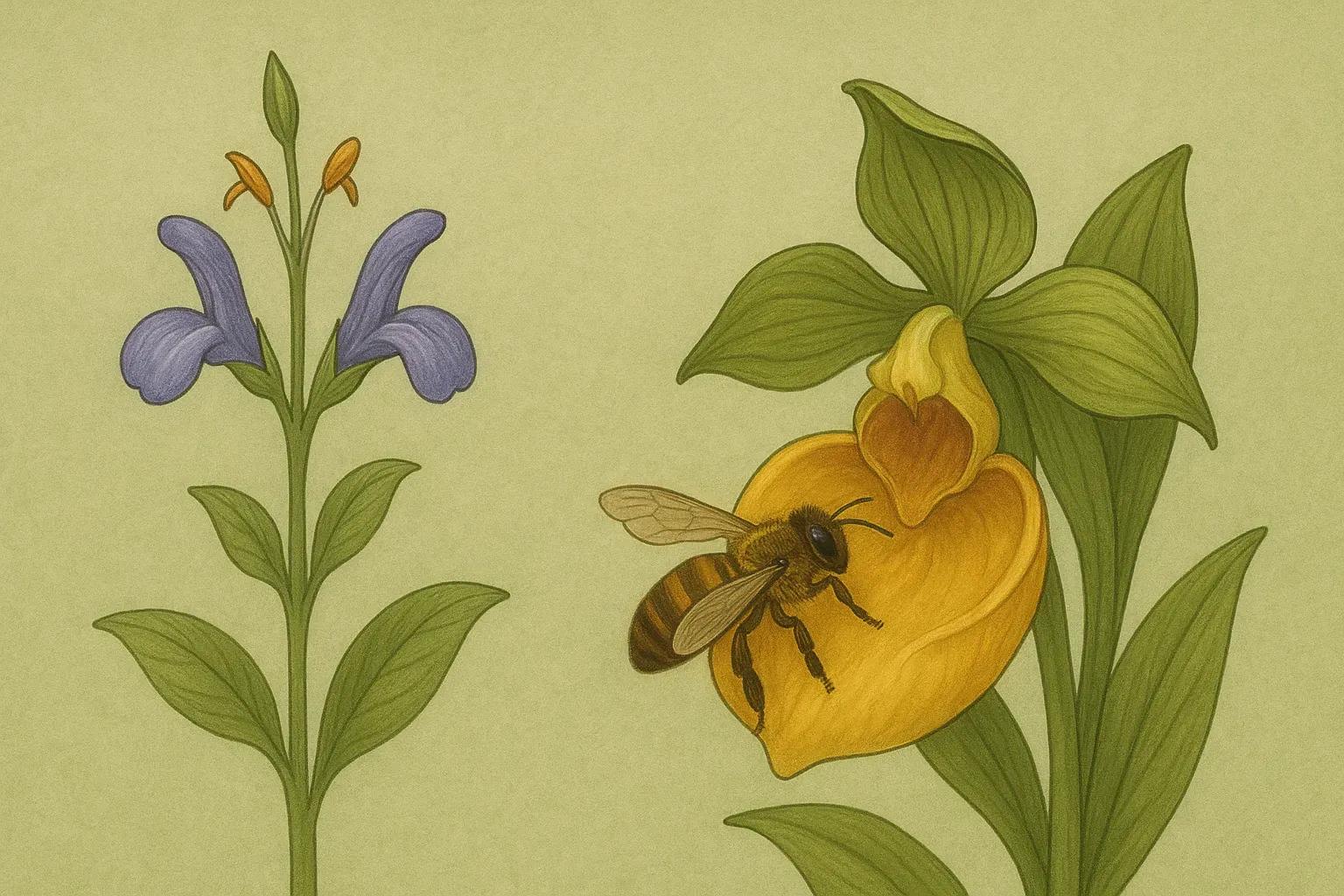Whenever we talk about intelligence, we think of humans, to a lesser extent of animals, and perhaps even of bacteria. But almost never do we mention plants.
And yet, they also solve problems, make decisions, and optimize resources, even though they do so without a brain or nervous system. Their way of "thinking" is written in the architecture of their flowers, in the mechanisms they develop to guarantee their survival in a world constantly in motion, while they remain static.
The sage flower, for example, has a pollination system that seems like a work of natural engineering. It has two stamens, each with a large anther at the tip that contains pollen. Closer to the base are smaller vesicles that function as a counterweight and cover the nectar.
When a bee or hummingbird enters to seek food, it pushes the vesicles with its head, causing the stamens to lower like a scale. The pollen is then deposited on the visitor's body, which, upon reaching another flower, will brush against the stigma, located above the stamens. This highly precise mechanism reduces self-pollination and prevents the loss of pollen due to wind or rain.
One of the most complex and surprising systems is that of the Coryanthes macrantha orchid. Its modified petal, called the labellum, forms a cavity similar to a bucket that fills with a liquid secreted by glands of the flower. Male bees of the Euglossa genus are attracted by the fragrance emitted by the flower.
As they try to collect those fragrances at the top of the labellum, a waxy and slippery surface, many bees lose their balance and fall into the bucket, getting their wings wet. Unable to fly, their only option is to crawl out through a narrow channel that leads directly beneath the flower's sexual organs.
As they pass through it, a mass of pollen adheres to the insect's back. And if it already came from another flower, the pollen it carried is deposited on the stigma, completing fertilization.
The question that arises is: why such a mechanism instead of a simpler process?
By relying on a single species of pollinator, the flower gains precision. Only the appropriate male bees are large enough to brush the pollen on the exact spot of their body. This avoids wasting pollen needlessly and allows for a better investment. The flower does not seek to be simple, but perfect for its evolutionary partner.
Another orchid with an equally specific mechanism is the Catasetum. Its fragrance also attracts euglossine bees. At the center of the flower, there is a column that contains the anthers, pollen-producing structures. And from the base of the column, fine hairs sensitive to touch emerge.

When the bee lands on the labellum to collect aromatic compounds, it brushes against these "antennas" and activates an internal spring that shoots the pollinium like a catapult. Thus, the pollen adheres firmly to the back or head of the insect, which flees startled and often seeks refuge in a female flower of the same species.
The firing is not random; it is calibrated to respond exactly to the weight, size, and movement of euglossine bees. Each part of the mechanism is designed to direct the pollen to the precise location, increasing the odds of reproductive success.
It is hard not to think that behind such precision there is a form of intelligence that is distinct, an intelligence that does not reason, but understands life through adaptation.
Examining these examples, we can see inventions that humans only created a couple of centuries ago. But this floral mechanics is ancestral: it has been functioning since its first appearance, over 100 million years ago.
When flowers arrived on Earth, there was no model to imitate; they had to invent everything by themselves. In the end, what we now call “engineering” is nothing more than the rediscovery of what nature had already created with silent wisdom.
By Tatiana Pardo, student of the Biotechnology Degree at UADE

Comments